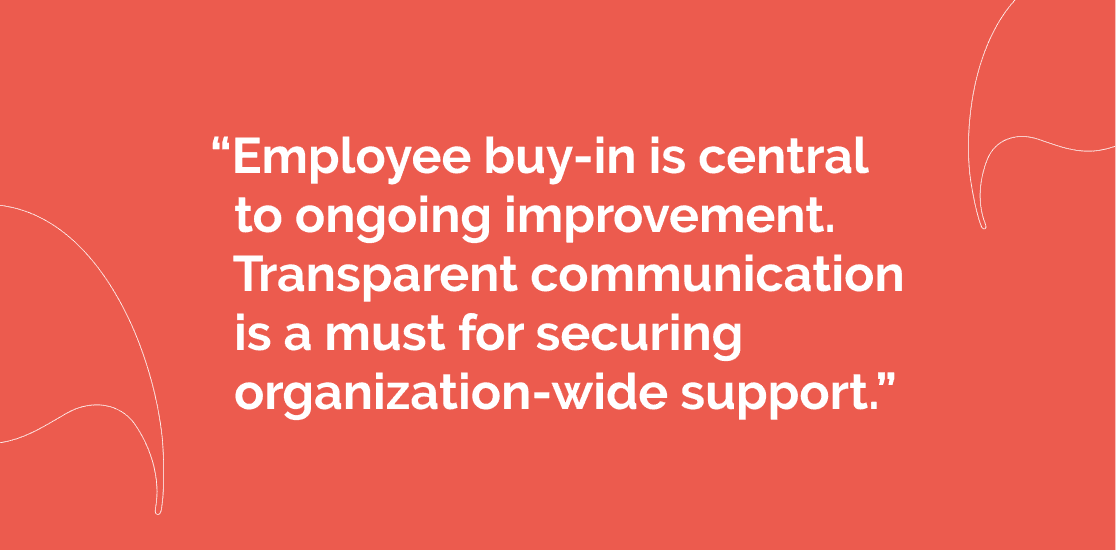Organisations, just like individuals, are afraid of change. After all, fear of the unknown is one of humanity’s most pervasive literary and artistic themes. We reflect on the top 10 reasons why brands and organisations fear change, judging from our own 10 life-changing years in the game.
Read on to explore why overcoming those fears is so necessary in our fast-evolving world.
1. Fear of uncertainty
Any change worth making is a step out of one’s comfort zone. It’s healthy to experience feelings of discomfort when confronting change. What’s going to happen next? What will the future look like? Will we be ready for it? But learning how to negotiate these fears can make all the difference.
Organisations of all sizes understandably worry about what the future holds, whether new strategies will prove effective, and if their leadership will be able to shepherd the team through uncharted territory. But new opportunities and innovation await the open-minded organisations that will end up leaving their more conservative competitors behind.
2. Risk-averse thinking
Risk aversion — a preference for outcomes with greater certainty, even with lower potential returns — is a normal reaction to big decisions. Organisations and the executives who run them fear that changes will result in financial losses, reputational damage, or stakeholder disengagement.
It’s why informed strategic changes are both safest and the most effective. Calculated risks backed by strategy and research can grant access to new markets, business growth, improved brand perception, greater engagement, and higher customer retention.
3. Employee resistance
Executives aren’t the only ones within an organisation who are prone to worries about change. Employee buy-in is central to ongoing improvement, and when employees resist change, organisations experience operational disruptions, lost productivity, and slowed progress.
The best way to mitigate these risks is by treating employees as active participants in their organisation’s future. Transparent communication is a must for securing organisation-wide support, as is requesting employee feedback and acting on it accordingly.

4. Leadership reluctance
Anyone who’s ever tried introducing new ideas, approaches, or strategies to their workplace is likely familiar with the burden of leadership resistance. Employee-initiated change often stems from practical insights into improvements that promise significant benefits — which is why leadership pushback can be highly damaging to morale.
Change-averse leaders can appear out of touch with day-to-day operations and employee concerns. Instead, good leaders must be willing to accept calculated risks and embrace the long-term vision that will improve the overall health of their organisations.
5. Legacy systems and processes
Legacy systems are outdated networks, technologies, or administrative methods that struggle to meet the demands of today’s modern business and governance ecosystems. As fewer people learn to work within these frameworks — for example, by studying older coding languages — it becomes more and more expensive to hire such qualified personnel.
Organisations clinging to legacy systems do so at the risk of hampering their continued growth and productivity. Meanwhile, transitioning to contemporary technology and tools leads to streamlined operations and improved efficiency.
6. Negative customer or stakeholder response
Just like executives and employees, customers and stakeholders may also need convincing to accept a proposed change. Organisations may worry that the communities they serve will dislike changes to products and services. But changes backed by keen audience insights are much more likely to have the right appeal.
Educating audiences about the benefits of an upcoming change can convince them to be more open-minded about what’s coming their way. This is where effective strategic communications come into play. A strong narrative backed by a targeted emotional hook can win customers and stakeholders over to an organisation’s point of view.
7. Limited Resources
Of all the reasons to fear change on this list, resource limitations are perhaps the most immediate. Budgets and work hours are finite, and both leadership and employees alike may be apprehensive about increasing workloads. Overworked and under-compensated employees might be just a few stressful months away from burnout and resignation.
However, as our Account Manager, Georgi Avramov, highlighted in a recent post on the subject, ‘When resources are limited, it is only natural for us to put the focus on the work we do for clients.’ This underscores the importance of creative reallocations. A thorough accounting of current spending and processes may free up valuable cash or personnel. It’s nothing that proper planning, good prioritisation, and optimal resource allocation can’t handle.

8. Cultural conflicts
As social standards evolve, so must organisational cultures change to stay relevant, inspire employees, and attract top talent. Otherwise, the risks of both employee and stakeholder disillusionment will only grow.
Just like in the wider world, forward progress can encounter complaints from a small but vocal minority of holdouts. Adapting organisational culture to align with desired changes and fluid social norms is necessary for long-term success and enhanced brand memorability.
9. Competitive pressures
A common response to competitor success is imitation. But that competitor’s dominance in the existing market landscape might be due to first-mover advantage. Aping their success is unlikely to return similar results.
Instead, pivoting to a new perspective on customer or stakeholder preferences is likely to yield greater returns. Yes, it requires the courage to innovate, but when changes are backed by sound strategy and promoted by strong narratives, organisations only stand to reap the rewards.
10. Short-term setbacks
Throughout this piece, we’ve touted the benefits of change as greater than the harms of the risks. But that’s not to say the risks aren’t real and valid. Being open to change requires a sense of long-term vision able to see past any transitional challenges. Losses in revenue or productivity may accompany change initiatives in the short term, but they’re worth the benefits of long-term sustainable success.
The road to meaningful change is rarely free of potholes and speed bumps, but strategic planning minimises these obstacles. Analyse the risks and allocate resources appropriately to effectively deal with any challenges ahead.
Embracing change for sustainable success
Though change can be imposing, it’s a necessity for any organisation wishing to ensure continued relevance amongst ever-shifting cultural norms, policy goals, and stakeholder preferences. Groups that embrace change as a positive opportunity will find themselves at the forefront of new markets.
Is there a change you’re pushing through at your organisation? Whether it is a strategic narrative change or a new brand idea — we’ll help you get the best of it. Get in touch today.



